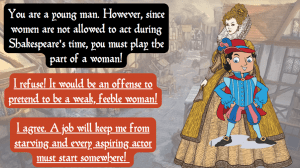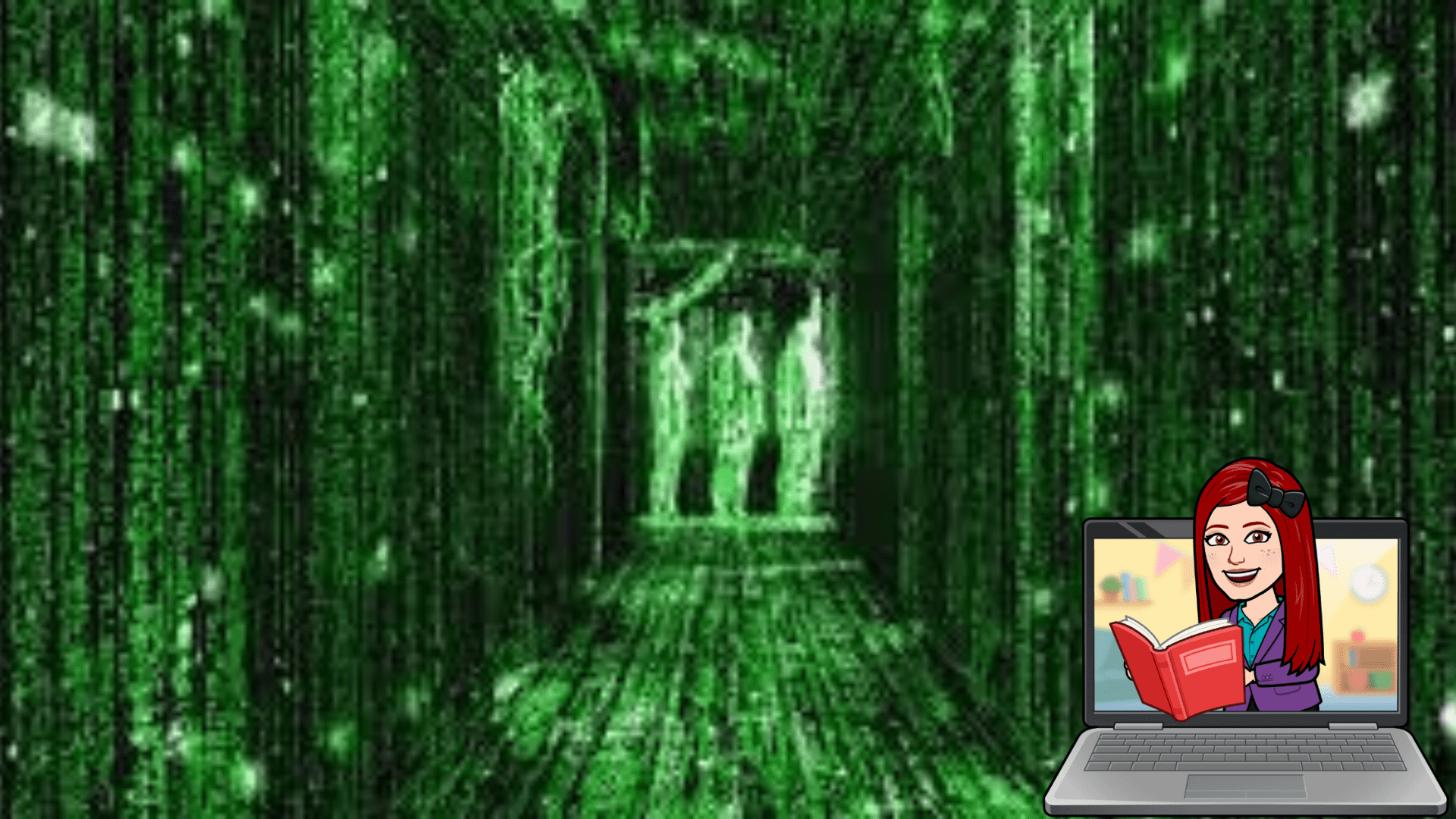Throughout history, humankind has been drawn to create and engage with fictional worlds to explore powerful, complex ideas which force us to question our assumptions, to connect with others, and to uncover deeper truths about ourselves and our world. Neil Gaiman (2013) identifies two key functions of fiction: first, fiction acts as “a gateway drug to reading” (para.9) by opening new worlds and possibilities while developing our literacy skills; secondly, fiction builds empathy, a necessary skill for citizens in our global world (para.9-10). Fiction helps expand our knowledge of the lives, thoughts, and feelings of others, and inhabiting the mind of another person helps us recognise our similarities, thus affecting what we think and how we respond to the world (Giles, n.d. para.3; Kidd & Castano, 2013, p.377; Whitten et. al., 2016, p.49; Short, 2018, p.291).
Some popular themes and trends influencing young adult literature include innovation and playfulness with content and form, multiple narrators, verse novels, and series fiction (Barone, 2010, p.15-17; Short, 2018, p.288). New technologies and the rise of social networking have also impacted children’s literature, increasing the accessibility of texts and authors while leading to a push for greater inclusivity and diverse representations by consumers (Barone, 2010, p.15-17). In recent years this intersection of technology and social awareness has seen the development of hashtags such as #WeNeedDiverseBooks and #LoveOzYA which connect readers with relevant content and build communities of like-minded consumers (We Need Diverse Books, 2021; #LoveOzYA, 2021).
Historical fiction is a powerful tool which can transform students’ understanding of the past while vicariously broadening their understanding of themselves, of others, and of the world around them. Recent Australian young adult historical fiction, such as Nanberry: Black Brother White (French, 2011), Crow Country (Constable, 2011), Sister Heart (Morgan, 2015), Freedom Ride (Lawson, 2015), Our Race for Reconciliation (Heiss, 2017), and Benevolence (Janson, 2020), focus on the experiences of Australia’s First Nations peoples. Through their portrayals of past injustices, texts such as these can play a crucial role in undoing prevailing misconceptions while promoting diversity and reconciliation.
Historical fiction novels, despite their focus on real events, ultimately fictionalise these events, and it can be a fine line between constructing an accurate, sensitive representation of the past and oversimplifying or trivialising peoples’ experiences (Wadham et. al., 2019, p.60, 62). Although historical acceptance is a key aspect of Reconciliation (Reconciliation Australia, 2021, 21-23), there is also the potential for First Nations students to be exposed to confronting material detailing their historical trauma. Historical fiction novels attempting to portray Aboriginal and Torres Strait Islander history, cultures, and experiences also run the risk of being didactic and tokenistic. Barone (2010, p.16) notes that didacticism has made a comeback in young adult literature, while McDonald (2013) observes that novels with cross-cultural friendships encouraging non-Indigenous characters to reject racism and embrace tolerance have recently become popular (p.120). Garrison (2019) rightly argues that any representation of Aboriginal and Torres Strait Islander characters should be genuine and sensitive to the realities of these cultures (p.21), while Heiss argues that many readers are turned off by tokenism in literature (as cited in Case, 2014, para.5). For this reason, many non-Indigenous authors now consult with Indigenous groups to ensure accurate, meaningful representation (McDonald, 2013, p.120). Author’s notes are another strategy employed by composers to add credibility and authenticity to their work and are increasingly popular because they provide much-needed contextualisation for readers keen to see how the fictional fits with the historical (Short, 2018, p.295; Wadham et. al., 2019, p.65). Historical fiction therefore provides educators with a rich stimulus for developing students’ skills in critical thinking and information literacy in addition to acting as a powerful tool to increase their interest, cultural literacy, and empathy.
Research repeatedly emphasises the social, personal, and academic value of reading for pleasure (Herbert, 2012, p.86; Earp, 2015, para. 2; Whitten et. al., 2016, p.48, 51). Yet secondary school teacher-librarians wishing to support their school community in this endeavour are faced with a number of challenges leading to a decline in students reading for pleasure in adolescence, such as lack of time allocated to pleasure reading, competing interests vying for student attention, and negative attitudes towards reading due to its perceived lack of value (Barone, 2010, p.2; Dickenson 2014, para.4; Manuel & Carter, 2015, p.116; Whitten et. al, 2016, p.57). Additionally, due to overcrowded curricula, novels are often used to teach literacy skills instead of as a means of understanding the human experience or for fun (Barone, 2010, p.2-3; Short, 2018, p.291). In secondary schools the so-called ‘educational silo’ mentality often impedes efforts at collaborative, cross-curricular planning (Sheninger, 2016, para.2-4), but teacher-librarians, who engage with a range of students, are uniquely placed to draw together the various syllabus strands into meaningful learning activities. Educators should utilise this expertise if they wish to create effective, authentic learning experiences for their students. Teacher-librarians should select quality resources for their collections which serve the interests and needs of our community (NSW DoE, 2017, p.8; Short, 2018, p.296), preferably from diverse publishers like Magabala Books, and build a culture of reading for pleasure which ideally includes staff, students, and parents by collaboratively teaching, promoting books via read-alouds and displays (both physical and digital), and encouraging activities prioritising student choice such as book clubs and literature circles (Clarke & Nolan, 2014, p.11; Manuel & Carter, 2015, p.124; Earp, 2015, para.15-20; Brugar & McMahon Whitlock, 2019, p.85; Victoria Department of Education and Training, 2020).
Bibliography:
Barone, D. M. (2010). Engaging teachers and their use of children’s literature. From: Children’s literature in the classroom: Engaging lifelong readers. Guildford Publications.
Brugar, K. A., & McMahon Whitlock, A. (2019). “I like […] different time periods:” elementary teachers’ uses of historical fiction. Social Studies Research and Practice 14(1), 78-97.
Case, J. (2014, November 5). ‘Getting it right’: Anita heiss on indigenous characters. Wheeler Centre: Books Writing Ideas. https://www.wheelercentre.com/notes/221927959a6b
Clarke, R., & Nolan, M. (2014). Book clubs and reconciliation: a pilot study on book clubs reading the ‘fictions of reconciliation’. Australian Humanities Review 56.
Dickenson, D. (2014). Children and reading: literature review. University of Western Sydney, Australian Government, and Australia Council for the Arts.
Earp, J. (2015, March 3). The power of a good book. Teacher Magazine. https://www.teachermagazine.com/au_en/articles/the-power-of-a-good-book
Gaiman, N. (2013, October 16). Why our future depends on libraries, reading and daydreaming. The Guardian. https://www.theguardian.com/books/2013/oct/15/neil-gaiman-future-libraries-reading-daydreaming
Garrison, K. (2019). What’s going on down under? Part 2: portrayals of culture in award-winning australian young adult literature. The Journal of Research on Libraries and Young Adults 10(2), 1- 34.
Giles, E. (n.d.). Navigating the common module. Literary Worlds Blog. https://englishliteraryworlds.weebly.com/literary-worlds.html
Herbert, B. (2012). When english meets history: exploring the faction genre through action learning. Literacy Learning: the Middle Years 20(3), 85-95.
Kidd, D. C., & Castano, E. (2013). Reading literary fiction improves theory of mind. Science 342, 377-380.
Lawson, S. (2015). Freedom ride. Walker Books.
LoveOzYA (2021). About #loveozya. https://loveozya.com.au/about/
Manuel, J., & Carter, D. (2015). Current and historical perspectives on australian teenagers’ reading practices and preferences. Australian Journal of Language and Literacy 38(2), 115-128.
McDonald, L. (2013). A literature companion for teachers. Primary English Teaching Association.
NSW Department of Education [NSW DoE] (2017). Handbook for School Libraries. https://education.nsw.gov.au/teaching-and-learning/curriculum/learning-across-the-curriculum/school-libraries/your-library
Reconciliation Australia. (2021). What is reconciliation? https://www.reconciliation.org.au/reconciliation/what-is-reconciliation/
Sheninger, E. (2016, December 4). The silo effect. A Principal’s Reflections: Reflections on Teaching, Learning, and Leadership. http://esheninger.blogspot.com/2016/12/the-silo-effect.html
Short, K. G. (2018). What’s trending in children’s literature and why it matters. Language Arts 95(5), 287-298.
Victoria Department of Education and Training. (2020, December 24). Literacy teaching kit: literacy circles. https://www.education.vic.gov.au/school/teachers/teachingresources/discipline/english/literacy/readingviewing/Pages/teachingpraccircles.aspx
Wadham, R. L., Garrett, A. P., & Garrett, E. N. (2019). Historical fiction picture books: the tensions between genre and format. The Journal of Culture and Values in Education 2(2), 57-72.
We Need Diverse Books (2021). Programs. https://diversebooks.org/programs/
Whitten, C., Labby, S., & Sullivan, S. L. (2016). The impact of pleasure reading on academic success. The Journal of Multidisciplinary Graduate Research 2(4), 48-64.
*This post has drawn on extracts from my ETL402 Assessment 1 response.




 Throughout ETL533 I have examined how I currently incorporate digital literature into our school and considered ways to increase this in future (
Throughout ETL533 I have examined how I currently incorporate digital literature into our school and considered ways to increase this in future (













